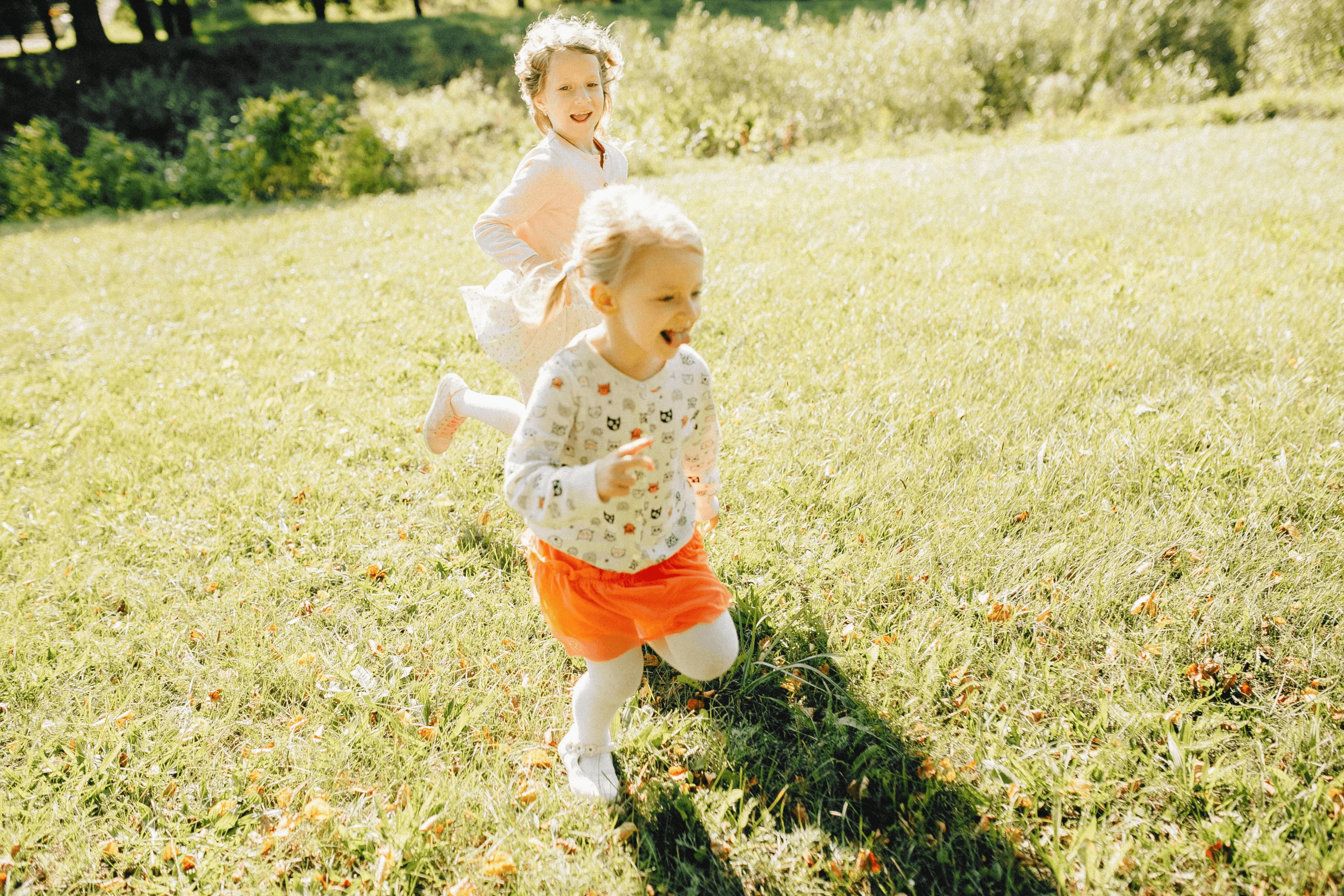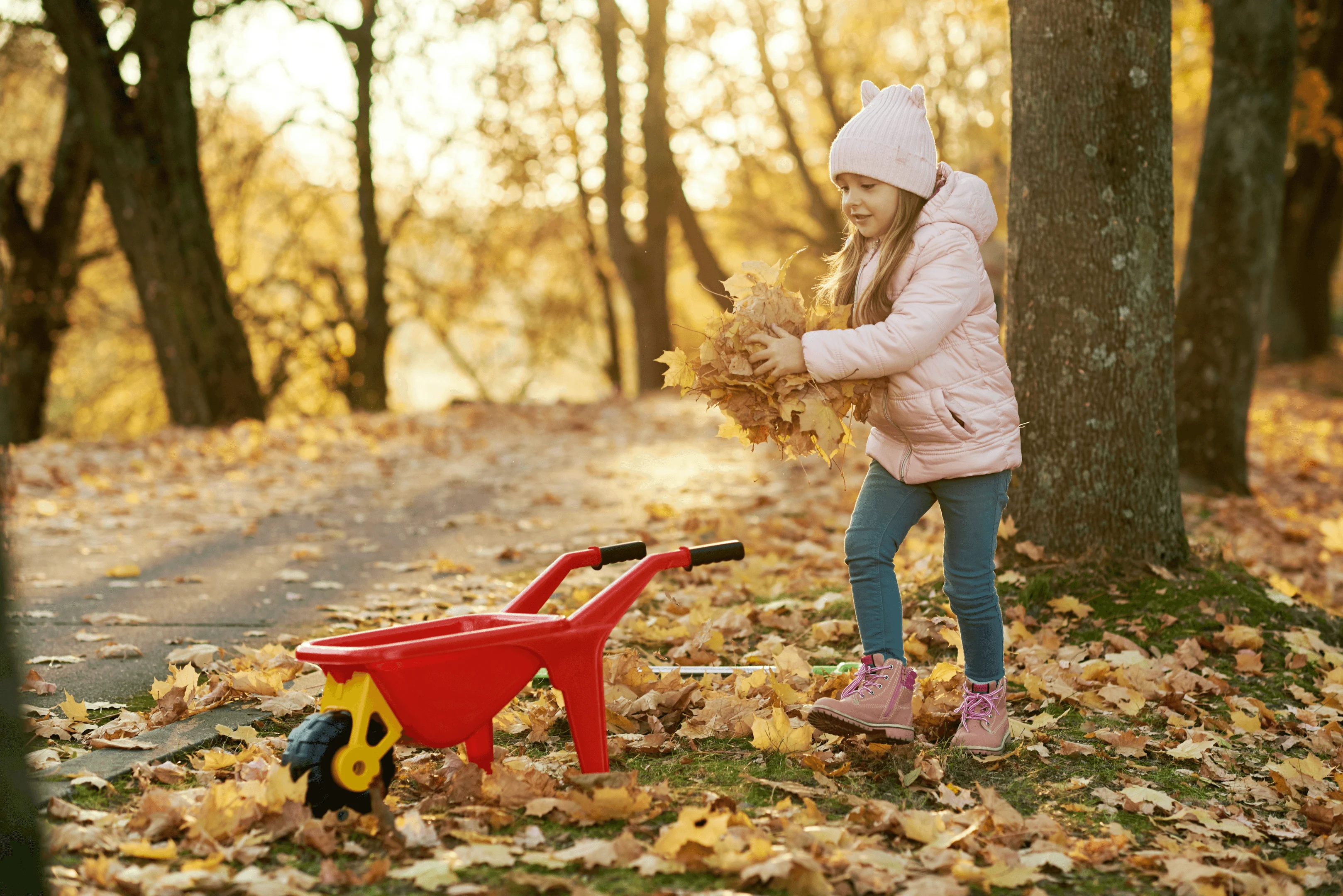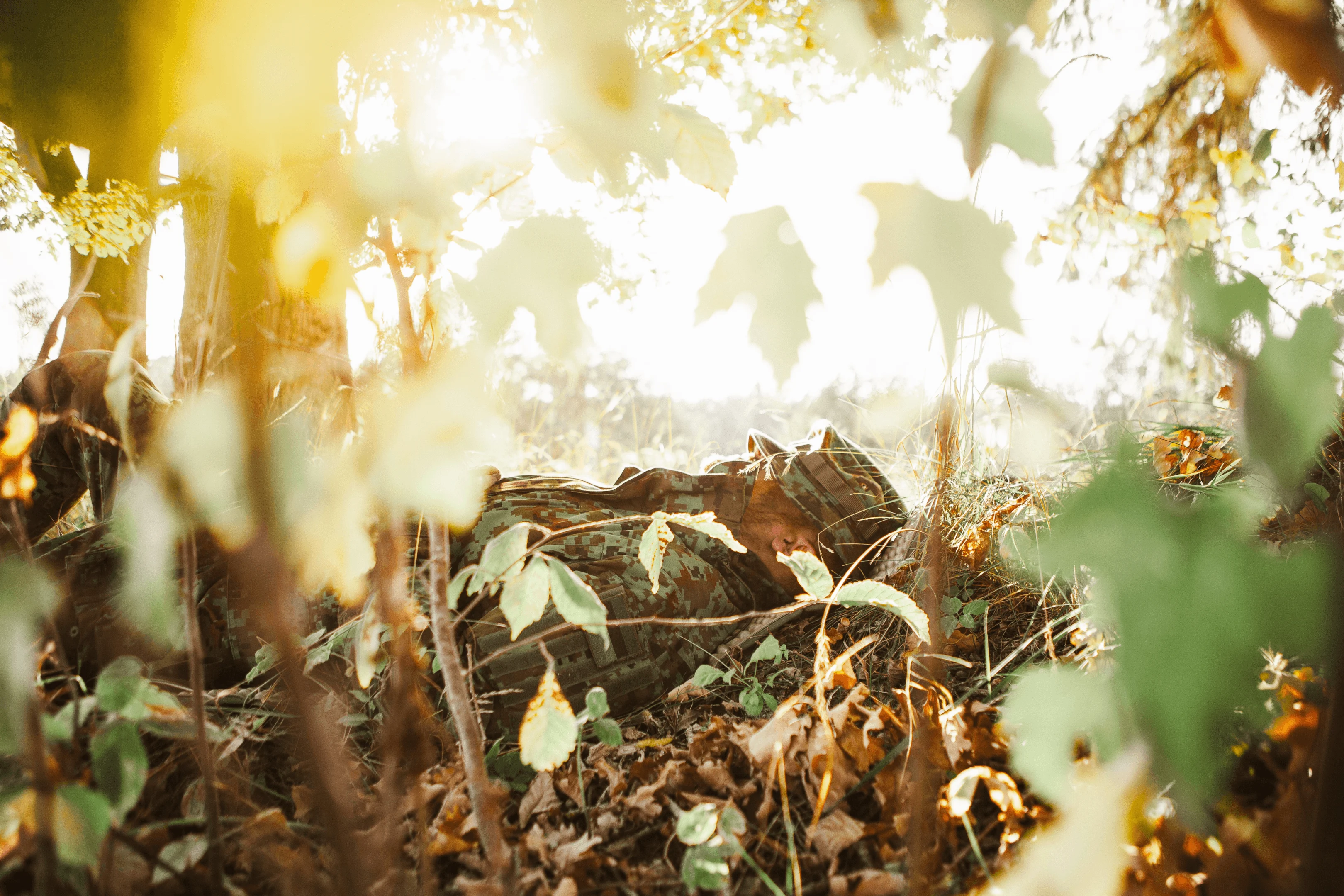
It’s been well-documented that modern life can be quite toxic for our children. Sue Palmer wrote brilliantly about this prior to the pandemic and the last few years have escalated many of the barriers to learning that she raised in her book, Toxic Childhood.
An increase in screen time, poor diet and sleep patterns, and the impact of social media and advertising all impact negatively on our children.
One of the best antidotes to this is to get outside in natural light and fresh air, play outdoor games, and spend time having fun. The forest school games below will all allow for lots of laughter and fun, but as a brilliant bonus, the children will be learning too.
1. Hide and Seek

The old ones are sometimes the best! Where better to play hide and seek than in a shady woodland or forest site where low branches, dens and tree canopies are plentiful?
Check first that your site is enclosed or you will need to set very clear boundaries before you start.
Make sure everyone knows the rules of this fun game:
Player 1 should hide their eyes and count to 20.
Everyone else must run and hide.
When player 1 has finished counting, and not a minute before, they can start to look for the other players.
The first person to be found becomes player 1 in the next game.
Continue to look for all the other players until everyone has been found or until you call them to come out.
The last person to be found is the winner.
Hide and seek includes skills of taking turns, counting, listening and attention and working together.
2. Target Practice
Target practice is one of the most fun and engaging forest school activities. Plus, a forest site has almost endless possibilities for improving throwing, catching and practicing target skills.
Wherever possible, try to use the natural objects and resources that are already part of the natural environment. Before you start, encourage the children to use a safe aim.
Here are a few ideas to start playing:
Pebbledash
Line up some large pebbles or stones and write numbers on them with chalk.
Decide on a suitable distance and place twigs as markers to make it fair for each player.
Use conkers to throw at and hit the numbers.
Count your score.
Tin can alley
Stick a row of bamboo canes or sticks in the ground at different heights.
Put a recycled tin can on top of each stick.
Throw pebbles at the cans.
Score a point for each hit and count your score.
Tree targets
Tie large sticks together by binding them with string and hanging them from the branches of a large tree.
Throw conkers or acorns upwards to hit the dangling sticks.
Score a point for each hit and count up your score.
Order! Order!
Write large numbers on the trucks of trees using chalk.
Say ready, steady…Go!
With a water pistol, run to find the numbers in order and then shoot them with water.
3. Rope Swing

One of the most exciting forest school games on this list, rope swing is an extension of the target practice games above but it also includes swinging
The actions used to swing help to develop our core muscle strength. It’s also an awful lot of fun and as far as I am concerned, every good forest school site should have a swing.
A strong rope and an old tire are all you need – just make sure it is safe and well-secured before you start to use it.
What you need:
A large container for example a bucket or bowl
Acorns, conkers, pine cones
A rope swing.
What to do:
Place the container a few meters in front of the rope swing.
Give each player a conker, an acorn, and a pinecone.
Take it in turns to swing on the rope swing.
As you swing forward, try to throw your conker, then acorn then pinecone into the container.
Score 1 point for a conker, 2 for acorn, and 3 for a pine cone.
The winner is the player with the most points.
This game is quite tricky and you may need to alter the distance of the container to make it easier at first. There are lots of skills being used including addition, hand-eye coordination, throwing and aiming skills, turn taking, balancing, and confidence building.
For more explanation of the benefits of forest school and further ideas, check out this link.
4. Wheelbarrow Race – Move the Leaves

You can adapt this game depending on the time of year and what is in season at your forest site. I like to play this one with piles of colorful autumn leaves, but you can also use stick piles and twigs, or even mounds of cut grass in the summer.
(Check for allergies first.)
You will need:
Children’s wheelbarrows. (You can buy adapted wheelbarrows with 2 front wheels for children who are not yet ready to use a one-wheeled barrow).
A small group of children
A large pile of leaves
How to play:
Ask the children to line up with their wheelbarrow.
Say Ready… Steady….Go!
Race to fill your barrow up with leaves.
Push your barrow and run to the finish point to dump your leaves.
Run back and repeat until all the leaves have been transported.
The winner is the first to move all their leaves.
Playing games like this encourages the children to be active and to stay focussed until the job is complete. If you want to add more jeopardy, you could always add a timer.
5. Roller Ramp
This game encourages the children to start using measuring skills in a fun way. They will be so busy having fun that they won’t even realize that they are learning.
The way you choose to measure will depend on the children’s current skills. They could measure with a piece of string, or if they are ready, you may want to use standard measures and use a tape measure. You can make a ramp from either a wooden plank and an upturned bucket, a grassy mound of earth, or a tree stump and a plank of wood.
You will need:
A ramp
A selection of different-sized balls
A way of measuring, for example, a tape measure
What to do:
Each player takes a turn
Choose a ball and carefully roll it down the ramp.
Measure the distance from the end of the ramp to where the ball stops.
The winner is the ball that rolls furthest.
You can get lots of learning from this game. Encourage the children to think about which ball is likely to roll the farthest so that they are starting to make predictions. Look out for your little future scientists!
6. Balloon Hoopla
This is a throwback to the fairground and every time I’ve played it, the children have loved it.
You will need:
Balloons (filled with helium)
String
Large pebbles or stones
Hoops
What to do:
Tie the balloons to the pebbles at different heights so that they don’t float away.
Space out the balloons in a line.
Write numbers on the balloons.
Line up for a turn.
Shout out a number.
Toss your hoop over the balloons.
You can adapt this game depending on the age and stage of your children. You can use it to practice recognizing numbers for young kids, or you can shout out an addition or multiplication sum and ask the older kids to hoopla the right answer.
7. Find the Fairy
This game needs a little preparation time but it’s definitely worth it. You can buy all kinds of fairy props on Amazon but I like to buy a tiny fairy door and place it between the roots of an old tree, somewhere not too obvious so that the children really have to hunt to find it.
What to do:
Create a sense of magic by telling the children that you have heard a fairy has moved into the forest or woodland but you are not sure where.
Ask the children for their ideas about where a fairy might live in a woodland. Would she live up high in the branches of the trees, or down on the ground?
Go on a hunt around the forest together until the children find the tiny door.
Tell the children that they have found her home and ask them to collect fairy food for her.
This is a great game to play, especially with younger children, but it can also be the stimulus fro lots of lovely artwork, poems or stories. Give it a try – the children love it.
If you want to find resources as a starting point, try this link:
8. Don’t Spill a Drop
This game is best played outdoors and it develops lots of different skills including following instructions, making comparisons, measuring and understanding liters.
What you will need:
Small groups of children
A water supply
Waterproofs (optional)
Containers that hold 1 liter
What to do:
Working in small groups, ask the children to move a liter of water from A to B.
If you want to make it more difficult, you could increase the amount of water.
Ask the groups to cross over a few obstacles on the way.
In the forest this could be climbing over tree stumps, crawling through dens or getting across uneven ground.
They are not allowed to spill a drop or they have to start all over again.
One person in each group should work as a spotter to make sure that not a single drop is spilled.
Make sure you measure the water again at the end to make sure that it is exactly the same amount.
9. Camouflage Teddy

One of the most interesting forest games, camouflage teddy introduces children to the idea of camouflage and animal habitats. Before you begin, talk to the children about camouflage and how it is used by different creatures around the world in different habitats.
You could also introduce them to the idea of soldiers wearing camouflage so that they can’t be seen by their enemy. Have a look at all the different colors around you in the forest. Do they look different in certain areas, perhaps where the light falls or where it is shady?
You will need:
1 teddy bear per group
2 small groups of children
What to do:
Explain that teddy needs to be hidden in the forest so no one can see him.
We need to find and cover him in natural materials so that he is camouflaged.
Go and explore, looking for natural materials to disguise teddy.
Look for items such as feathers, leaves, grasses, ferns and flowers.
Work together to make a camouflage suit for your bear and then hide him in the forest.
Each group should then go on a hunt to see if they can spot the other group’s bear.
The winning group is the group who manages to keep their teddy hidden for the longest time.
10. Lava Flow
This is a firm favorite in our forest site and is one of the best team games. Tell the children that while you were traveling through the forest, a volcano erupted, blocking the way out, and the floor is now molten lava. The only way to survive is to cross the river to safety.
What you will need:
A large area to cross
Teams of 4
Wooden pallets or crates
What to do:
Work together in teams to cross the river and get your whole team to safety.
If anyone steps on the hot lava, you will have to restart.
To make it more difficult, one player must be in contact with the platforms the whole time.
If a platform is left without a player on it, it will be swept away by the lava flow and you will have to manage with only the platforms that are left.
The whole team has to get across the river.
This is great for developing problem solving skills and teamwork, as it encourages everyone to talk to each other and work alongside one another. It can highlight who has future leadership skills and who can problem solve and think logically.
11. Shadows
This is a lovely outdoor game that gets children working together in groups, listening to one another, learning about the position of the sun at different times of the day, and as a bonus, they are also learning how to measure.
You will need:
Tape measures / meter sticks or another way of measuring.
Chalk
What to do:
In groups of 3 or 4, ask each group to create the longest shadow possible.
Each group must follow the rules
The shadow must be continuous.
They are only allowed to use their own bodies.
They must measure and check the length of their group shadow at the end to see which group is the winner.
If you’ve enjoyed these games and you want more, this website has some follow-up ideas.
As always – have fun!
